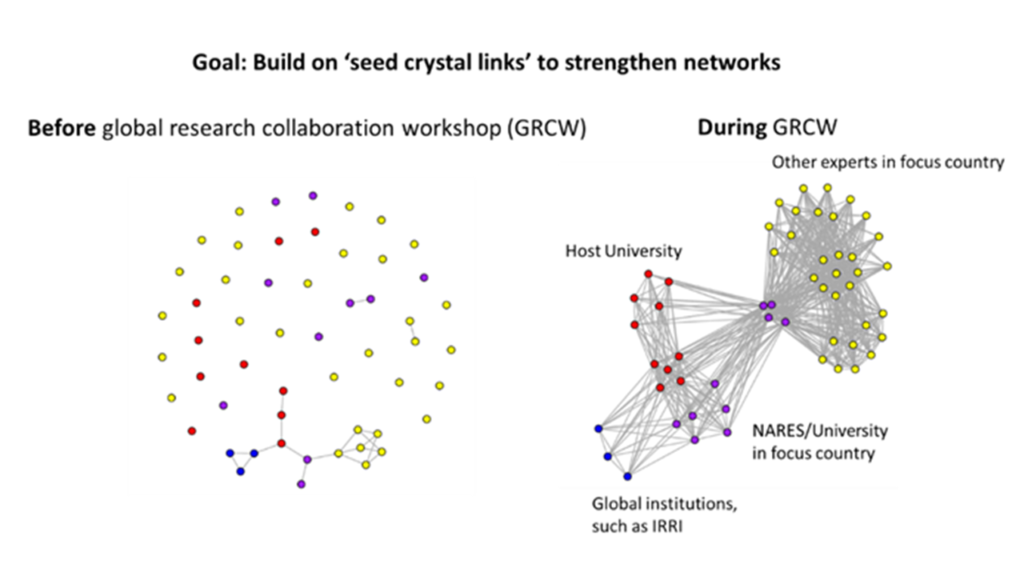 A Global Research Collaboration Workshop (GRCW) is a research project that engages students at a host university and at one or more institutions in other countries, as well as global institutions such as CGIAR centers or FAO groups. A GRCW can be structured efficiently with the research project linked to a university course in which students in multiple countries learn new scientific concepts and methods and work with more senior researchers to implement the project. The objectives of a GRCW are to
A Global Research Collaboration Workshop (GRCW) is a research project that engages students at a host university and at one or more institutions in other countries, as well as global institutions such as CGIAR centers or FAO groups. A GRCW can be structured efficiently with the research project linked to a university course in which students in multiple countries learn new scientific concepts and methods and work with more senior researchers to implement the project. The objectives of a GRCW are to
1. Provide a useful research product in the form of a peer-reviewed journal article
2. Build capacity and shared knowledge in the collaborative team
3. Establish a new global collaboration network and lay the groundwork for future collaborative projects
The general structure of a GRCW can be used across a wide range of topics. We have implemented the structure in the context of global plant health. There are many potential applications in plant health, from meta-analysis to diagnostic validation networks. We have analyzed plant pathogen and pest risk using the R2M toolbox (R2M) and its open-source ecosystem. We are developing examples of workshop materials to make it simpler to implement a GRCW for the first time, such as rubrics and templates for communication. We will also provide lessons learned from implementing GRCWs, and ideas for successfully achieving GRCW objectives, in a manuscript currently under development.
An example of the product of a GRCW is the following preprint of a manuscript currently under review, developed by a team at University of Florida (USA), Ambo University (Ethiopia), and the International Potato Center (Ethiopia and Kenya):
B. A. Etherton, A. I. Plex Sulá, R. A. Mouafo-Tchinda, R. Kakuhenzire, H. A. Kassaye, F. Asfaw, V. S. Kosmakos, R. W. McCoy, Y. Xing, J. Yao, K. Sharma, K. A. Garrett. 2024. Translating Ethiopian potato seed networks: identifying strategic intervention points for managing bacterial wilt and other diseases. bioRxiv 2024.02.12.579952; doi: https://doi.org/10.1101/2024.02.12.579952